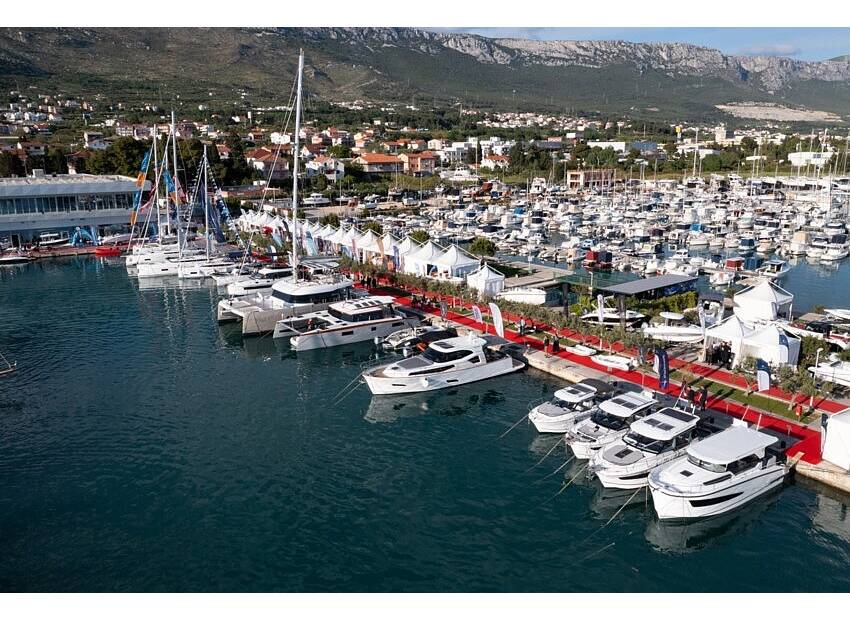If you are anything like me, nothing quite beats...
a quiet, pristine anchorage to top off a great sail.
But did you realize that some sea bottoms...
will allow your anchor to break out and drag...
like a manta ray scooting over the bottom?
And that could put your small sailboat "on the rocks!"
Discover how to pick the perfect bottom for your anchor.
For worry-free boat anchoring, you want your anchor to bight deep into the seabed. Matter of fact, the more fluke area that lies beneath the seabed, the better.
The ideal bite will bury the flukes and show just the shank (long arm) of the anchor above the seabed. While this may be a perfect image, it's rare to get this type of bite unless you dive on the anchor and do-it-yourself.
Study your nautical chart and look for the best sea bottom possible. Make this your #1 step before you consider the other factors of boat anchoring such as three-sided protection, swing room, and anchor type selection.
What types of bottoms will you encounter? Follow this quick guide. Note that each bottom type shows the chart symbols you will see on your navigational chart or chart plotter.
Ideal Anchoring Bottom Characteristics
Clay or Hard Mud make good anchor holding ground, as do bottoms with clay and mud combinations. Messy as your anchor might be in the morning, few bottoms offer better security than Hard Mud or Clay.
Take extra care when anchoring in Hard Sand. Some lightweight fork-type anchors--like the Danforth--can "sail" along a hard packed sand bottom like a manta ray. Use a plow or claw anchor (Manson, Rocna, Delta or similar) and bury the flukes deep into the seabed. Stay away from fork-type anchors in hard sand bottoms (Danforth) unless you can adjust the fluke-to-shank angle (the Fortress allows you to adjust the angle of the flukes to the shank).
Clay (Cy; Cl)
Hard (h; hrd)
Hard Mud (M) (nearby, look for h; hrd)
Sand (s)(nearby, look for h; hrd)
Less-than-Ideal Anchoring Bottom Characteristics
You will often be unable to choose the ideal anchoring spot. Boat anchors have a tough time in slippery or hard bottoms. Rock, grass or kelp might provide a bite right away, but the anchor can "roll out" from up and down motion, a change of wind or current direction, or on short scope.
Three "Security Booster" Strategies You Need to Know
Loose-packed or soft bottom material can give way, even with your anchor's flukes buried beneath the seabed material. If you must anchor in these type bottoms, use more scope (10:1 if possible), a storm or heavier sized anchor, and/or anchors in tandem (two anchors in line, chained together).
Grass (Grs)
Kelp (Wd; Kelp;Seaweed)
Gravel (G)
Stones (St)
Rock (Rk;Rky)
Silt (Si)
Soft Mud (M) (nearby, look for so; sft)
Soft Sand (S) (nearby, look for so; sft)
Coral (co)
Shells(Sh)
Oysters (oyster beds) (oys)
Notice the chart symbol abbreviation for hard and soft bottoms: h or hrd; and s or sft. You will often find these symbols alone--without a specific bottom type adjacent to the abbreviation. How can you tell what type of bottom they define?
Scan the chart within a mile or so of the abbreviation. Look for the symbol for sand (S) or the symbol for mud (M). If you are unable to locate the bottom type, either move to another anchorage where you are certain of the bottom type, or use one of the three "Security Booster" strategies described earlier.
Check your nautical chart with care before you decide to anchor in any anchorage. Make this your "first choice" criteria to give you and your sailing crew peace-of-mind and worry-free boat anchoring--wherever in the world you choose to cruise!
Get instant access to 400+ sailing articles, videos, live discussion forums, and free ebooks! Click here to find out more!
Captain John






















